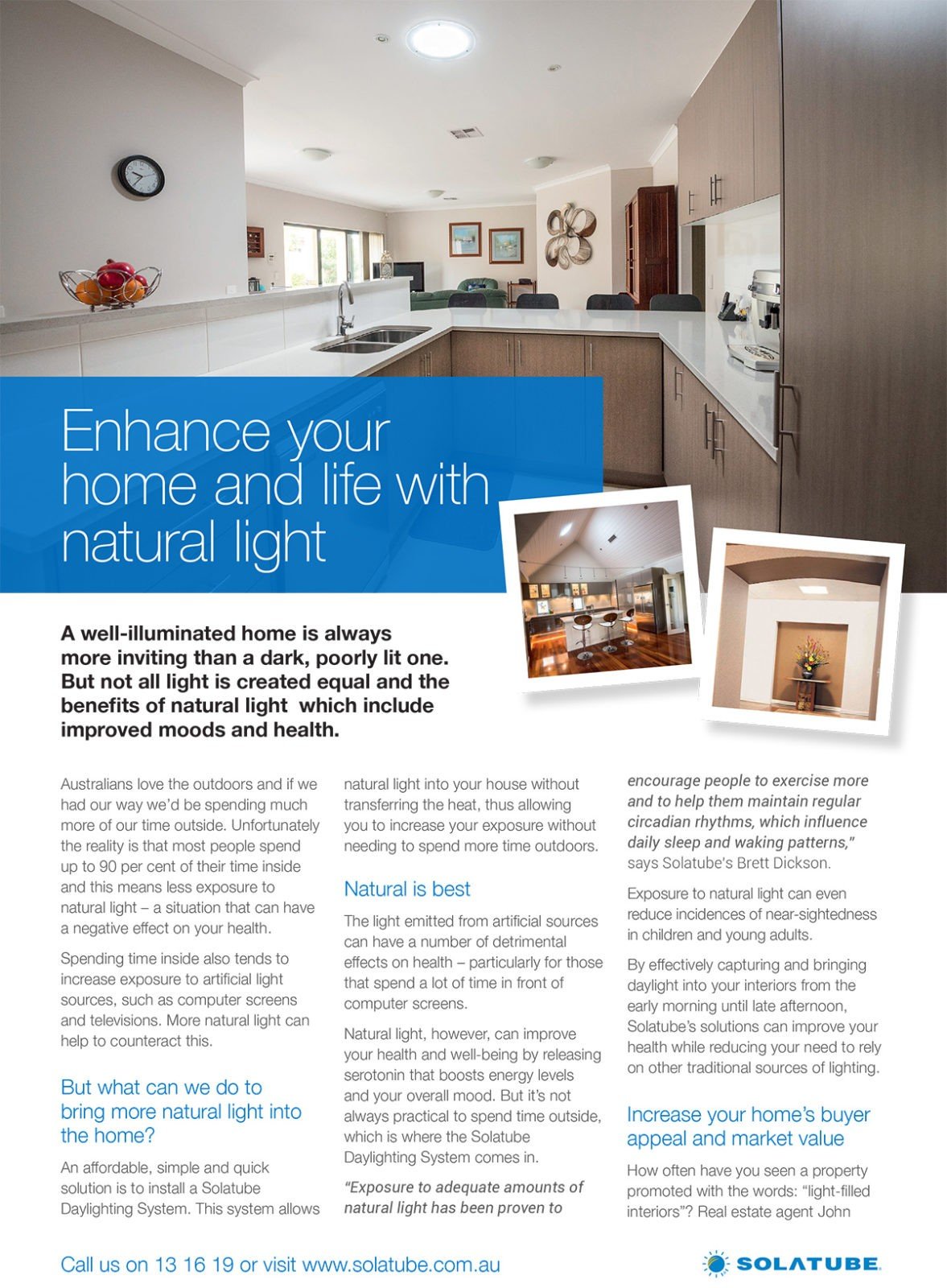
Adding skylights is a fantastic home renovation idea, but with so many skylight products on the market, which one will achieve the best results?
When considering a skylight there are two main objectives that renovators try to achieve.
The first is a simple need to introduce more natural light into the home to make the space brighter and more welcoming, and as a functional and economic alternative to electric lighting during the day. This can reduce energy costs, improve the look, feel and all-round health of the home – sunlight after all, is the world’s best source of natural light.
The second most common objective of adding skylights is to create a feature that allows you to see the sky and nature during the day (and night), potentially open up the roof space to make a room feel bigger, and to enjoy a stand-out feature inside the home.
With these two objectives in mind, there are a number of issues that should be considered, mainly; budget, design aesthetic and the structural limitations of the building.
The design of your project that meets your budget, is the first step in deciding on the correct skylight installation.
Bringing workable and usable natural light to replace electric lighting that the family can enjoy all year round, can be achieved at a reasonable price, and the best example of this is through a tube skylight. With extremely reflective tubing and high levels of technology, these products are able to bring more natural light than other much larger systems, with substantial less heat gain. While tubes are the most effective way to bring large amounts of light into the home, round and square finishing options at ceiling level, can still be matched to complement your décor and style.
On the other hand, design features where the sky can be seen day and night through a window, will typically involve much higher costs, and should be researched extensively prior to commencement of works. While windows can range from $600-$1200 depending on the size and quality, it is often the installation component that can substantially increases the price of such projects.
The aesthetic design and location of the skylight is the second main consideration.
Delivering natural light into the interior of the home through a tubular system, will provide great flexibility to position the ceiling fixture almost anywhere in your home, generally only excluding lower floors in two storey homes (although sometimes even this is possible). This effectively means you can deliver natural light precisely where it is needed most.
If you have the budget to create a grander feature, windows can really come alive by changing the design of your ceiling with light wells. This will allow you to see the sky from many angles, open up the room and provide much light to the entire space. Consider adding blinds to such features to reduce excessive heat gain during summer.
One of the most challenging areas of the home is the central/mid-section, as it is often the furthest section for natural light to reach. Tubular systems in such situations benefit greatly from the higher position on the roof and will bring in light over longer distance without loss of intensity. The specific design of the ceiling fixture will also spread or diffuse the light much more evenly throughout the space at all times of the day.
Roof window features require deep light wells from ceiling to the top of the roof, which greatly reduces the view of the outside and the amount of light they bring in. At the same time costing more due to the additional plaster work required. These deep wells can also create square or rectangular light patches on the floor that will transition across the room as the sun moves across the sky and will limit access to sunlight early morning and late afternoon.
And this of course is where the decision comes in, window or tube? What result are you trying to achieve – A workable source of light evenly spread via a tube, or a window feature.



I’m just wondering about the heat factor up here in Darwin.. Our lounge room is pretty dark ..
And they say keeping it dark keeps it cooler..
Hi Kathy
Solatube Australia have developed and patented their own technology that specifically focuses on removing infrared rays (heat) that enters the skylight. While 99.97% of the visual light is reflected down the tube, infrared rays are absorbed out of the tube before they can transfer through to the interior. This technology makes our Brighten Up series Daylighting Systems Australia’s coolest skylight, while still providing the most natural light.
I want to get one for a v dark hall, but don’t want extra heat.
Hi June
Our DS Series Tubular Daylighting systems have pty technology INFRAREDuction, utilising a proprietary process to extract infrared wavelengths on the first light bounce before they can be transferred through the tube, dispersing heat before it ever enters the building. Industry-leading daylighting technology delivers unparalleled transfer of natural light, with minimum heat gain. So it’s perfect for hot climates, where it reduces cooling loads on airconditioning systems.